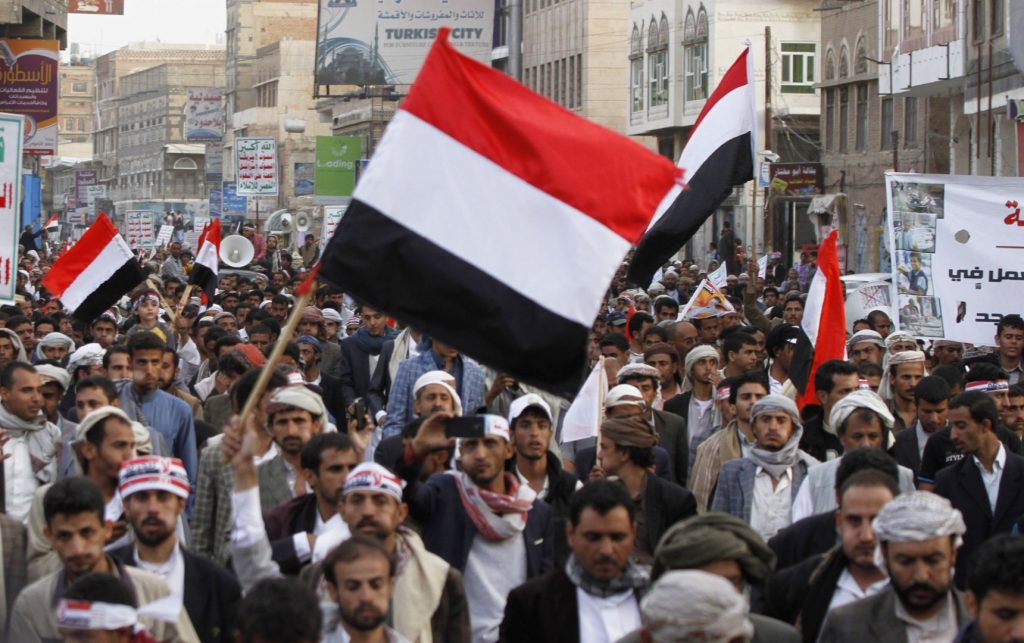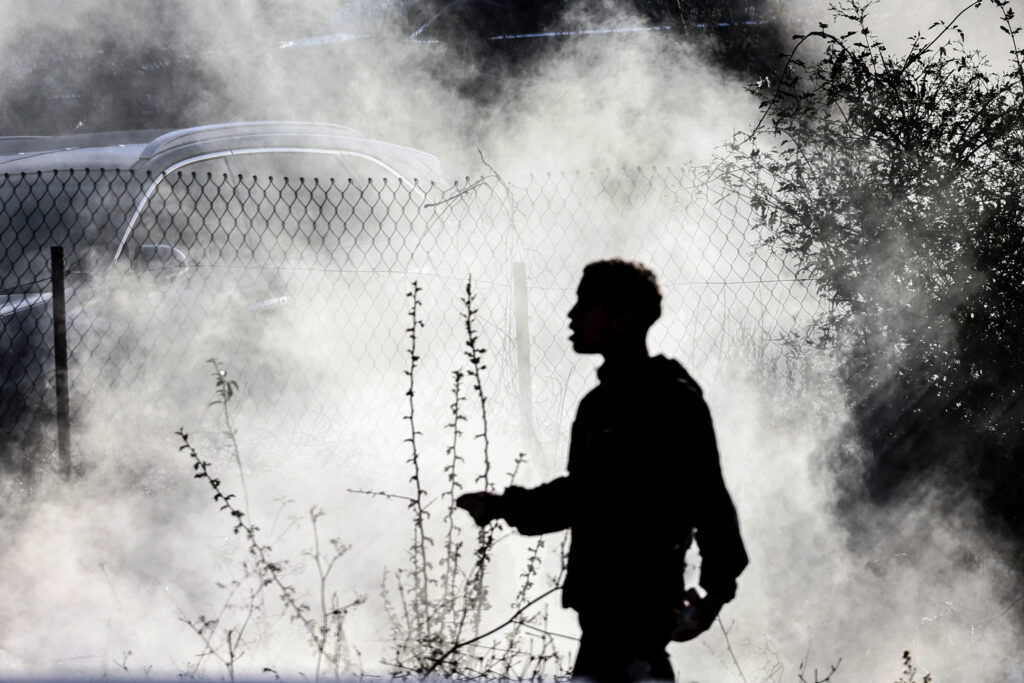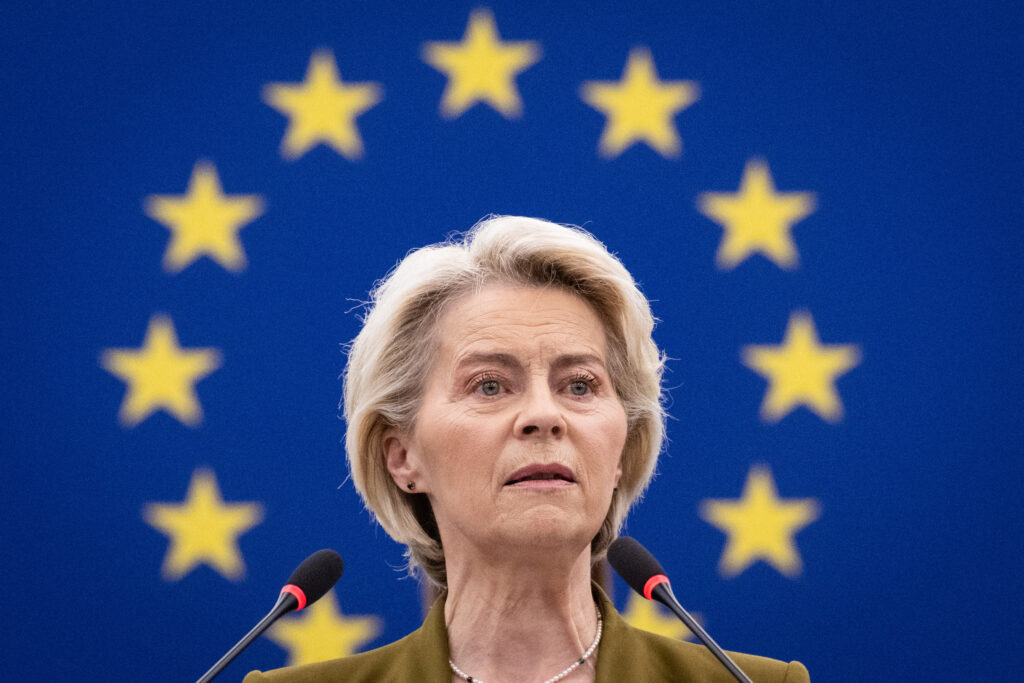By Susanne Dahlgren
Fighting broke out in late January in Aden, the capital of the so-called legitimate government of Yemen. Troops loyal to the Saudi-backed President Abd Rabbo Mansour Hadi and troops loyal to the Southern Transitional Council (STC), supported by the United Arab Emirates, exchanged fire that left at least 40 people dead.[1] This is not the first time that the Saudi coalition has fought one another, but what made the situation serious was that this time, accusations of a coup taking place in Aden were made.[2] What lies behind the recent infighting that has made some commentators ask if the Saudi-led coalition is disintegrating?[3]
Deepening Dissatisfaction
The background of the recent discord in Aden goes back to April 2017 when president Hadi sacked the popular governor of Aden, Aidrus al-Zubaydi. Together with sacked ministers of Hadi’s cabinet, al-Zubaydi established the Southern Transitional Council (STC) to rule the southern governorates and lead the area towards independence, as was announced under the Historical Declaration of Aden issued in a mass demonstration.[4] Six months later, the governor Hadi nominated to replace al-Zubaydi resigned, accusing Hadi’s prime minister Ahmed bin Daghr of “leading a ring of top level corruption.”[5] In a letter addressed to the president, the governor accused Bin Daghr’s government of embezzling public funds and thus “stealing the water from the mouths and the light from the eyes of the residents.” The letter accused the cabinet ministers of illegally taking funds from the governorate’s budget, a budget allocated to the provision of electricity and sanitation to the citizens. Enduring power cuts increased to an alarming level of 16 hours a day, forcing several hospitals to announce that they had to close down.[6] The anger of the residents was aggravated by the fact that their governorate was the only one in the country that regularly paid all revenues collected from taxes and customs directly to the state treasury. The government was supposed to have the entire state budget in its disposal following Hadi’s move of the headquarters of the State Bank from Sana’a to Aden in September 2016.[7]
Nevertheless, for the residents living in areas “under control of the legitimate government”, the acquired state resources did not seem to make life any easier. Government employees have not received salaries since 2016. The downfall of the local currency (from 250 per US dollar in 2015 to 500) has increased the prices of basic consumer goods by 72 percent since pre-war levels of 2014, making 40 percent of Yemeni families food insecure (as a government report rather modestly indicates). The UN Food Programme estimates that 75 percent of the population is in imminent need of humanitarian assistance. On top of criticism of the inefficiency of the government, the “legitimate president” sits in a palace in Riyadh with little involvement in what is happening in the country. This has all led to wide dissatisfaction throughout the south and calls for the government to resign.
Militarization of Peaceful Territories
In the eastern al-Mahra governorate (that so far has managed to stay out of the war), Saudi coalition troops were deployed last autumn under the pretext of “fighting the smuggling of Houthi arms.”[8] The self-nominated Sultan of al-Mahra, Abdullah bin Isa Al-Afrar, rejected the deployment, saying that the governorate had its own means of security.[9] To make the need for the extra military reinforcements seem more urgent, the first ever motorcycle assassination took place in the governorate capital al-Ghaydha following the deployment, repeating the formula common in other areas of Yemen. According to this formula, often attributed to former president Ali Abdullah Saleh and his earlier right hand man Ali Muhsin al-Ahmar (now Hadi’s vice President), assassins riding a motorcycle are deployed to conduct random killings so that they can be used as an excuse to militarily enforce an area. Al-Afrar’s appeal to the Emirati troops fell on deaf ears, despite the Sultan’s position as member of the presidium of the Emirati-supported Southern Transitional Council. While al-Mahra has for decades been known as a site of smuggling activity taking place across the borders with Oman and Saudi Arabia, the claim that this would be a point of entry for Houthi arms is ridiculous. The Saudis and Omanis should check their side of the respective border. Except for green hills that separate al-Mahra from Dhofar in Oman, the governorate is largely covered by desert which the local tribes and military know well and which is where cross-border cooperation with Oman functions well.
By the same token, reports have indicated that there have been a large number of Salafists entering the governorate that historically has been unaffected by radical thinking. The plan, that some accuse to be a Saudi initiative, is to set up a school in the manner of the reputed Salafist institute in Dammag that the Houthis destroyed in 2014. The presence of the institute that spread anti-Zaidi propaganda was one of the root causes of the Houthi rebellion in the early 2000s. The Salafist shaykh who led the Dar al-Hadith institute in Saada, Yahia bin al-Hajuri, is said to be supervising the establishment of the institute to be built in Qishn, a small coastal town in al-Mahra.[10]
The sudden inflow of hundreds of northern Salafists is an alarming news not only to neighbouring Oman that for decades has fought Islamic extremism, but to Mahari people at large. A women’s demonstration was held in January in Qishn.[11] According to the statement issued by the women, “thousands of northern extremists have arrived to our small town” and started to purchase land for the purpose of establishing an extremist community. The women appealed to the governor of al-Mahra to stop the invasion, and to residents not to sell land to the incomers.
Militarizing a governorate that has remained peaceful throughout the war would not have been possible if Hadi in November 2017 did not replace the long-standing governor of al-Mahra, Muhammad Abdullah Kuddah, with a more Saudi-friendly politician in Rajah Sa’id Bakrit. Kuddah had set limits to coalition involvement in the governorate, including one where the governorate airport should only be used for civilian flights and that all decisions about military deployments should be made together with the local authorities. Following the protests, the new governor quickly issued an order banning the establishment of religious institutes without the approval of the local authority, or in areas not officially designated. The order also indicated that “displaced persons” were not to settle without authorities’ permission.[12] It remains to be seen if these orders will prevent the Salafist invasion.
State Disintegrating, Local Governance Strengthening
All these moves have resulted in popular unrest towards Hadi, exceeding what has been earlier seen. In Aden, activists have launched a popular movement with the hashtag #GovOverthrow.[13] Feeling the pressure by Aden residents early on, the president of STC, al-Zubaydi, announced on January 21 an ultimatum to bin Daghr to resign and for Hadi to nominate a new cabinet.[14] The ultimatum passed, and as people all over the southern territories were about to arrive in Aden for a demonstration, government troops opened fire. They were met with STC-loyal Popular Resistance troops and full fighting erupted. 40 people have been killed so far. While both parties have appealed for a ceasefire, the troops under the command of the STC have taken over military barracks and government buildings all around Aden. The evening after Bin Daghr and his ministers were being held in the government palace by Southern troops, fireworks erupted in the Aden sky as people celebrated what they considered a victory over the corrupt government.
There seems to be a misunderstanding between Hadi and bin Daghr on what is happening. The former has commanded the troops to retreat from the streets while the latter has issued a statement where he in strong words accuses that a coup is taking place in Aden.[15] Speculations on a split in the Saudi coalition were soon dismissed by a spokesman of the Emirati army who denied that any disputes existed between the coalition parties. Both parties participated in calming down the sentiments between the Hadi regime and the STC. At the same time, the Emirati spokesman expressed sympathy towards the Southerners’ demands.[16]
In a normally functioning democracy, popular demand for the government to step down is hardly considered a coup. The war in the northern part of the country largely involves a power struggle over who rules over Sana’a, whereas the recent events in Aden have little significance. For the Southern politicians united under the STC, they need to show that they are serious as a ruling body. While challenging Bin Daghr’s government, they have no problem in continuing to show loyalty to the “legitimate president,”; the man who is sitting in a Saudi palace harms few. The priority for the Southern politicians is for an efficient bureaucracy to be the norm so that power cuts are minimized.
While the state may be disintegrating in Yemen, the society is building up from the ground in many parts of the war-torn country. Local governance is the key to understanding this process, which in Aden has now taken a step forward. While the government of Bin Daghr was not made to step down, it clearly has woken up. In a recent attempt to try to make things look better in the country that it has heavily bombed for almost four years, Saudi Arabia offered 2 billion dollars to boost not only the war-torn Yemeni currency, but the unpopular government. Following that, there was news about the arrival to the port of Aden of new bills printed in Russia worth 30 billion Yemeni riyals. As one of the deepest frustrations against Bin Daghr’s regime has been its weakness to get the wheels running in areas liberated from fighting, it is rumoured that the arrived bills are used to pay the long overdue salaries to civil servants. The decision of the Interior Ministry in Aden to allow southerners to join the national army indicates that the government is busy trying to make things look as if it is listening to the popular unrest.[17] Southerners were excluded from the national army following the 1994 civil war. Once the current war broke out, the Emirati army came to train southern troops.
The recent events in Aden do not mean that South Yemen is even close to announcing independence. Rather, what we have seen is a revolt against a corrupt rule and an attempt to make things running again despite the misery of the war and the Saudi blockade. At the same time, the events sent a message to the outside powers who manage the Yemeni peace process: consider who to involve next time in your talks. In a countermove to the southerners’ recent uprising, Hadi’s vice president, the old fox Brigadier Ali Muhsin al-Ahmar, has gathered the old opposition coalition, the Joint Meeting Parties, to join Hadi in establishing a national alliance.[18] Should that alliance replace the Houthis, the war would have shifted the Yemeni political process two steps backwards, in essence crushing the spirit of the Yemeni spring of 2011. Such a prospect would mean a continued call for southern independence.
Susanne Dahlgren is an anthropologist interested in moral questions, law and politics. She studied anthropology at the University of Edinburgh, the London School of Economics and Political Science (LSE) and the University of Helsinki where she received her PhD in 2004. She has been a fellow in the Helsinki Collegium for Advanced Studies and at the Academy of Finland. Her PhD project was published as Contesting Realities. The Public Sphere and Morality in Southern Yemen (2010). Her recent work has involved theorizing the Arab revolutions as part of a project on Geographies of Gender in the Arab Revolutions, convened by Frances Hasso and Zakia Salime. A recent photo essay was published in Muftah.org on Rebels without Shoes: A Visit to South Yemen Revolution Squares. At MEI, she has worked on a project entitled Post-Socialism in the Arabian Peninsula: the Politics of Islam and Modernisation in South Yemen.
[1] https://www.reuters.com/article/us-yemen-security-clashes/death-toll-rises-on-second-day-of-clashes-in-yemeni-port-of-aden-idUSKBN1FI1BE (accessed on January 30, 2018).
[2] https://aawsat.com/english/home/article/1158231/turmoil-aden-legitimacy-warns-‘coup’ (accessed on January 30, 2018).
[3] https://www.bloomberg.com/news/articles/2018-01-29/saudi-coalition-frays-as-yemeni-allies-turn-guns-on-each-other (accessed on January 30, 2018).
[4] http://en.southerntransitionalcouncil.net/news/7815 (accessed on November 22, 2017).
[5] https://www.adennews.net/yemen/aden/19719/ (Urgent: Governor of Aden Abd al-Aziz Al-Miflahi formally resigns from his post and accuses bin Daghr of leading a corruption gang, text of resignation, November 16, 2017, accessed on November 20, 2017).
[6] http://www.aljazeera.net/news/arabic/2017/11/2/انقطاع-الكهرباء-يهدد-بتوقف-مستشفيات-عدن (Power cuts risk hospitals to close down, accessed on January 28, 2018).
[7] https://www.reuters.com/article/us-yemen-cenbank/yemen-president-names-new-central-bank-governor-moves-hq-to-aden-idUSKCN11O0WB (accessed on September 20, 2016).
[8] http://yemen.yt/show1263006.html (Saudi invasion in al-Mahra: Salafi emirate in the borders of Oman? accessed on January 28, 2018). The same piece of news circulated in several news sites, see also http://www.alalam.ir/news/3280681/.
[9] http://adengad.net/news/284748/ (Bin Afrar refuses the deployment of the Security Belt troops in al-Mahra and holds fast on the demand to establish independent province of al-Mahra and Soqotra, accessed on January 30, 2018).
[10] According to the news story, reprinted by an Iranian news site, Yahya bin al-Hajuri, a Salafi shaykh who previously managed the Dar al-Hadith institute in Saada, has arrived in Qishn, al-Mahra to oversee the establishment of the centre, see http://www.alalam.ir/news/3280681/ (Saudi invasion in al-Mahra: Salafi emirate in the borders of Oman?, accessed on January 15, 2018).
[11] http://almandeb.news/?p=83700 (Women of Qishn: We reject the arrival of northerners in our area, accessed on January 31, 2018).
[12] http://sabanew.net/viewstory.php?id=28389 (Bakrit ordered not to allow establishment of religious institutes or camps for displaced people in undetermined areas, accessed on February 5, 2018).
[13] In Facebook https://www.facebook.com/GovOverThrow/ and on Twitter https://twitter.com/GovOverThrow
[14] http://msdernet.xyz/muta.php?no=1569293&d_no=429 (Aden: The Southern Transitional Council announces an official media campaign to topple Bin Daghr’s government, accessed on January 26, 2018).
[15] http://www.alhayat.com/m/story/27009642#sthash.nCiN284d.dpbs (Bin Daghr appeals to Arab states to rescue Aden from separatists, accessed on January 29, 2018).
[16] http://www.adengd.net/news/300367/ (A spokesman of the Arab coalition says the coalition understands the demands of the Southern Transitional Council, accessed on January 29, 2018).
[17] http://adengd.net/news/301443/ (Important urgent decision from the Ministry of Interior in Aden, accessed on February 6, 2018). A similar call to recruit local militia in al-Mahra was made some time earlier by the new governor.
[18] See http://almasdaronline.com/article/96874 (Ali Muhsin talks about the events in Aden, about the war against the Houthis and about his relationship with the PGC, accessed on February 4, 2018), and http://adengd.net/news/301446/ (General al-Ahmar to lead efforts to form a national coalition with the participation of Southern Movement, accessed on February 6, 2018).





